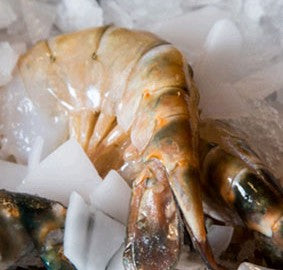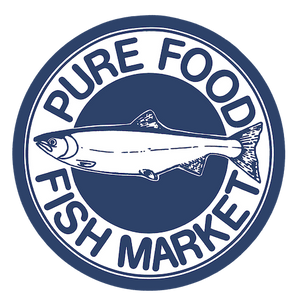FRESH BLOG
For all things Fresh Seafood, cooking inspiration, and more!

Shrimp Facts: Everything You Need To Know
From the Puget Sound to the Outback, who doesn't love a helping of perfectly prepared, succulent shrimp? These delightful little crustaceans are a culinary treasure, and when you dig into shrimp facts, you'll discover there's more to them than meets the eye.
Did you know that shrimp come in a variety of sizes, with U/10 being the colossal ones? When purchasing shrimp, terms like “medium” or “jumbo” aren't standardized. It's essential to pay attention to the number count on the label, which indicates the shrimp size. For example, the label will provide a number such as 16/20 or 36/40 per pound of shrimp. The smaller the number, the larger they are. The count number U/10 means the package has under ten shrimp, also known as “colossal” shrimp.
As for how many pounds to buy? The rule of thumb is 1 pound of raw shrimp is equal to 1/2 pound of cooked, peeled shrimp. If shrimp is the main course, plan on serving 1/2-1/3 pound per person if the shrimp are peeled and 3/4-1 pound if not.
Facts about shrimp: To preserve their flavor and texture, it's best to freeze shrimp with the shell on.
Raw frozen shrimp can be kept in the freezer for up to six months when properly stored. It's best to avoid de-veining or peeling shrimp before freezing, to maintain flavor and texture within the shell. Fresh shrimp should be consumed within a few days of purchasing.
So what's the deal with the veins? The black line that runs through shrimp is the digestive track. While perfectly edible, some may prefer to de-vein for presentation purposes. To de-vein peeled shrimp, run the tip of a paring knife on its backside without cutting through and simply pull the vein out. If you'd like to cook shrimp with the shell on, you must use a de-veiner tool that can be purchased at any kitchen store.
In fact, shrimp is the most consumed seafood in the United States. (Source: www.aboutseafood.com) While shrimp facts can be fascinating and enlightening, it's equally important to appreciate that shrimps are more than just a subject for interesting tidbits. Shrimps are a nutritional treasure chest, offering a delectable combination of omega-3 fatty acid, zinc and an antioxidant called astaxanthin. According to an article Pharmacist Suzy Cohen wrote in the Huffington Post, astaxanthin is a pain reliever, anti-inflammatory and supports eye health among other benefits. ( Source: www.huffingtonpost.com) This antioxidant is what gives shrimp it's signature fleshy pink color.

